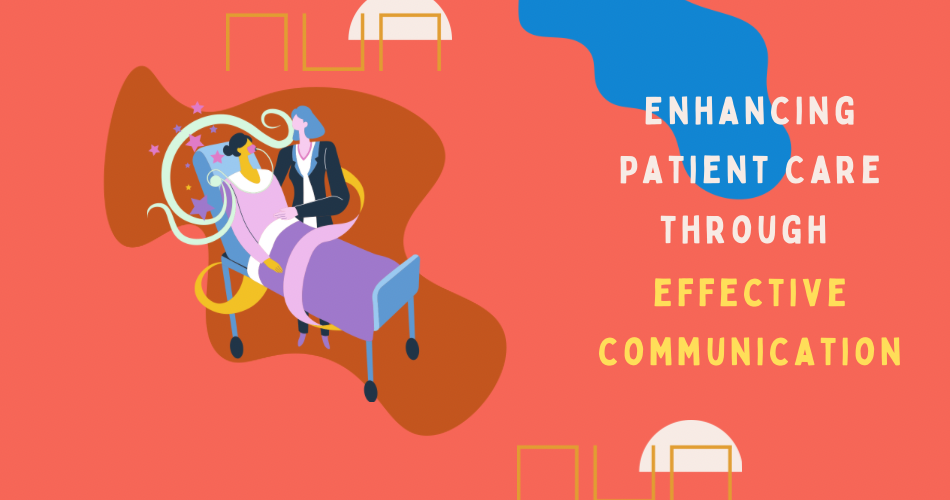Effective communication is essential for providing quality healthcare. This means that healthcare professionals must be able to communicate effectively with patients, families, and other healthcare staff. Effective communication ensures that patients receive the best care possible and can even reduce medical errors. In this blog article, we will discuss what effective communication in healthcare looks like, the benefits of effective communication, the types of communication used in healthcare, strategies for effective communication, how to interact with patients, techniques for communicating with patients, the importance of communication in healthcare, challenges of communication in healthcare, and technology and communication in healthcare.

What is effective communication in healthcare?
Effective communication in healthcare is the exchange of information between healthcare professionals, patients, and their families. This includes verbal, nonverbal, and written communication that is clear, accurate, and comprehensive. Also, it is important for healthcare professionals to be able to communicate effectively with patients, families, and other healthcare staff. Effective communication can help to improve patient safety, reduce costs, and build trust between healthcare professionals and patients. Healthcare professionals need to be aware of the patient’s cultural background, values, and beliefs in order to understand better how to communicate with them.
Effective communication in healthcare should be timely, honest, and respectful of the patient’s needs and concerns.
Benefits of effective communication in healthcare
Effective communication in healthcare has a number of benefits. It can help to improve patient safety by reducing medical errors and ensuring that patients receive the best care possible. It can also improve patient satisfaction by providing clear and timely communication. Effective communication can also reduce costs by eliminating unnecessary tests or procedures. Finally, it can help to build trust between healthcare professionals and patients, which is essential for providing quality care.
Types of Communication in healthcare
There are several types of communication used in healthcare. Verbal communication is the most common type and includes speaking, listening, and questioning. Nonverbal communication is also important and includes body language, facial expressions, and eye contact. Written communication is also used and includes patient notes, charts, and medical reports.
Strategies for effective communication in healthcare
There are several strategies that can be used to ensure effective communication in healthcare.
- First, healthcare professionals should take the time to listen to the patient and understand their concerns and questions.
- Second, healthcare professionals should be aware of their nonverbal communication and ensure that it is appropriate and respectful.
- Third, healthcare professionals should be clear and concise with their communication and provide accurate and timely information.”
- Finally, healthcare professionals should be open to feedback and willing to address any concerns the patient may have.
Tulane University has published an interesting article on Strategies for Effective Communication in Health Care
How to interact with patients
Interacting with patients is an important part of effective communication in healthcare. Healthcare professionals should be respectful and considerate of the patient’s needs. They should also be patient and take the time to listen to the patient’s concerns. Healthcare professionals should also be aware of their body language and ensure that it is appropriate and professional.
Techniques for communicating with patients
There are several techniques that can be used to communicate effectively with patients.
- First, healthcare professionals should use plain language when talking to patients and avoid medical jargon.
- Second, healthcare professionals should ask open-ended questions to encourage the patient to talk.
- Third, healthcare professionals should be honest and provide accurate information.
- Finally, healthcare professionals should be empathetic and show that they understand the patient’s concerns.
Technology and communication in healthcare
Technology is playing an increasingly important role in communication in healthcare. It can help to improve communication and make it more efficient. For example, electronic medical records can be used to store patient data and provide easy access to information. Video conferencing can also be used to communicate with patients remotely. Finally, healthcare professionals can use mobile apps to communicate with patients and provide them with quick access to information.
Challenges of communication in healthcare
Despite the importance of communication in healthcare, there are still some challenges that healthcare professionals face. One of the biggest challenges is time constraints. Healthcare professionals are often under time pressure and may not have enough time to provide adequate communication. Another challenge is language barriers. Healthcare professionals may encounter patients who do not speak the same language, making it difficult to communicate effectively.
Conclusion
Effective communication is essential for providing quality healthcare. Healthcare professionals must be able to communicate effectively with patients, families, and other healthcare staff. There are several types of communication used in healthcare, such as verbal, nonverbal, and written communication. There are also several strategies that can be used to ensure effective communication, such as listening to the patient, being aware of nonverbal communication, and being open to feedback. Technology is also playing an important role in communication in healthcare. Despite the importance of communication in healthcare, there are still some challenges that healthcare professionals face, such as time constraints and language barriers. By understanding the importance of communication in healthcare and utilizing strategies to ensure effective communication, healthcare professionals can improve patient care and provide quality care to their patients.
